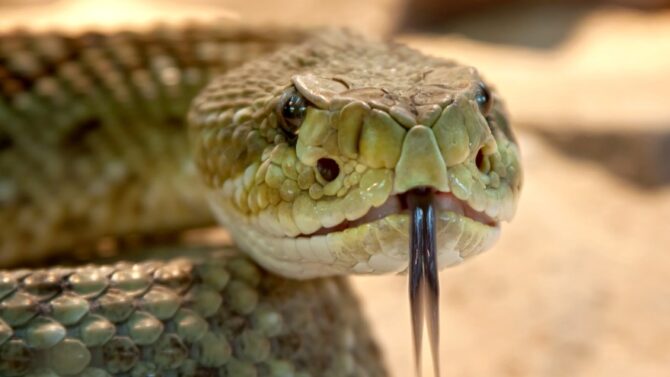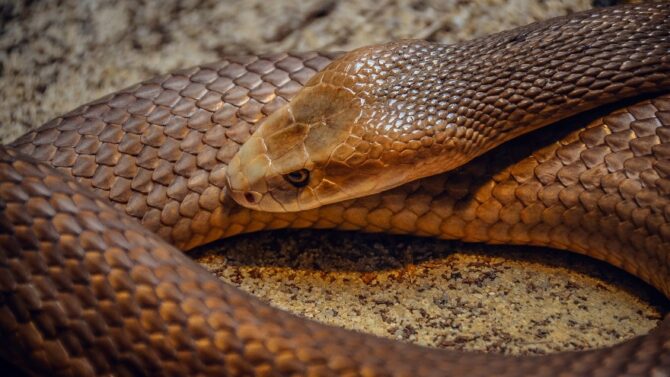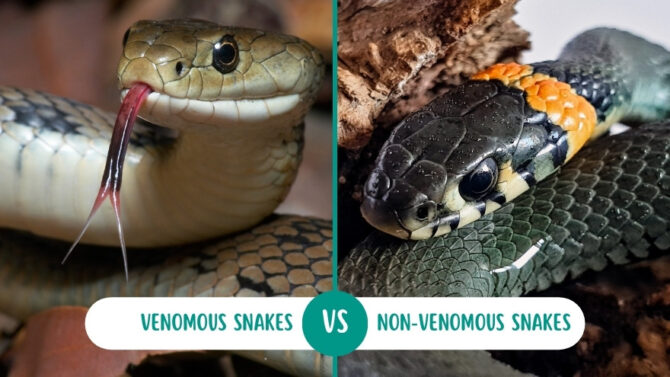For many people, snakes are dangerous reptiles that should best be left in the wild.
However, snake lovers know that some snake species don’t deserve that bad reputation.
The corn snake and milk snake are some examples of docile species that are easy to take care of, and though some people don’t believe it is possible, these species can be kept as pets.
According to this study, there are 1.15 million pet snakes in 550,000 United States households.
Many snake lovers who consider becoming the pet parent of this lovely creature are sometimes unable to choose which would be better.
Corn and milk snakes are usually cited as good pets, especially for first-time snake owners.
To choose one, you’d need to know the similarities and differences between the milk snake vs corn snake.
In truth, both species are considered some of the safest, and they are both small and easy to take care of. However, the corn snake tends to be more docile and less likely to bite than the milk snake, even if it is stressed or anxious. There’s also a difference in the colors and patterns.
That isn’t to say the corn snake is better than the milk snake. You may find you prefer the milk snake to the corn snake and vice versa. Let’s look more into these two.
Milk Snake vs Corn Snake Comparison
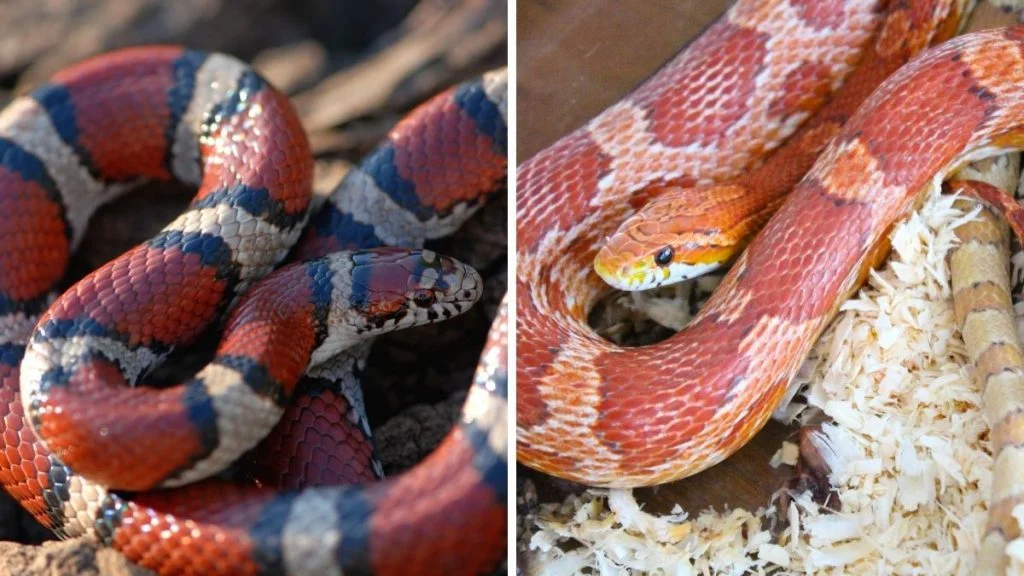
Milk Snake
- Lifespan: Up to 15 years (In the wild); 20 years (In captive)
- Length: 35.5 to 175 cm (Adult)
- Mass: 38 to 225 g (In the wild)
- Colors: Yellow, Red, Black (with bands)
- Venomous: No
- Scientific Name: Lampropeltis triangulum
Corn Snake
- Lifespan: 6 to 8 years (In the wild); Up to 20 years (In captive)
- Length: 61 to 180 cm (Adult)
- Mass: 700 to 900 g
- Colors: Various morphs and colors
- Venomous: No
- Scientific Name: Pantherophis guttatus
Milk Snake Overview
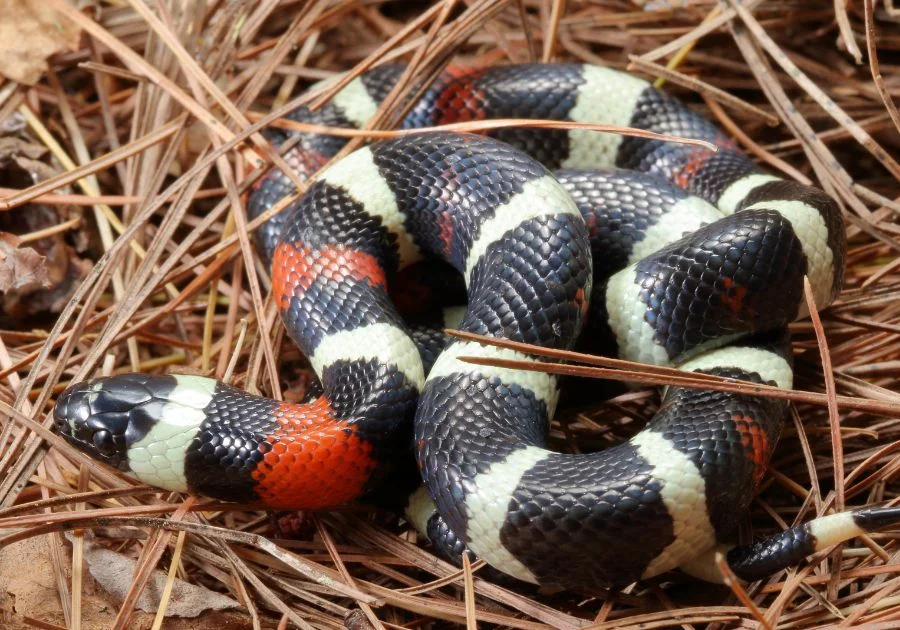
The Milk snake’s scientific name is Lampropeltis triangulum, a species of kingsnakes with over 24 subspecies currently recognized.
Each of these subspecies has its similarities and differences, and while many authorities have asked that the subspecies become their species, that hasn’t been done yet.
The primary habitat of the milk snake is the forest.
However, you can also find subspecies of the snake in areas like swamps, farmland, dunes/beach, and rocky slopes.
Milk snakes often hibernate from late October to April.
Corn Snake Overview
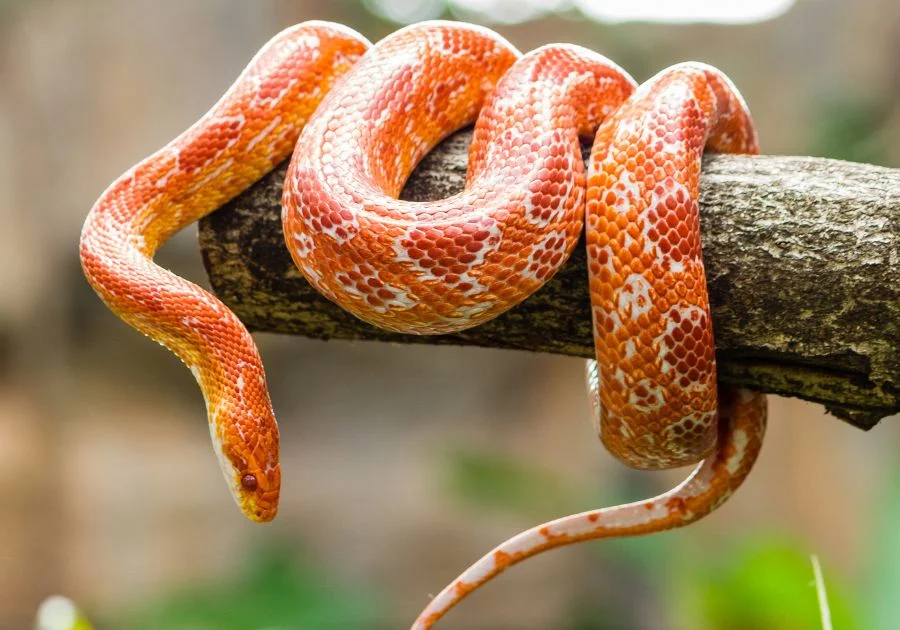
The corn snake’s scientific name is Pantheropus guttatus, which hails from North America. The corn snake is a rat snake—so named because it prefers rodents—and it lacks venom.
Due to that, it kills its prey using constriction, which consists of holding the prey down till it dies.
Due to their similarities, corn snakes are often confused for the copperhead, a more venomous snake. Because of this confusion, a lot of corn snakes have been killed.
However, the conservation status of the corn snake remains “Least Concern.”
This snake species assists in rodent control, a valuable service to humanity.
Similarities and Differences Between Milk Snake and Corn Snake
There are some factors to consider when drawing out the similarities and differences of these snake species.
Under these factors, you will find some common grounds and the ways they are apart.
We’ll be looking into eight factors:
1. lifespan
Corn snakes survive differently in the wild than when kept as pets.
The corn snake in the wild has a short lifespan that falls between 6 and 8 years old.
When kept as a pet and in the right conditions, they are less susceptible to natural dangers, thus having a longer lifespan.
Pet corn snakes can live up to 20 years.
Milk snakes differ significantly. It lives long both in the wild and as pets.
The wild milk snake has a life expectancy of 15 years, while the pet counterpart gets to 20 years.
2. Habitat
Corn snakes can be found in a variety of environments, including forests and fields.
A good number live in the southeastern and central United States.
When winter comes, the corn snake often hides in crevices and logs; during the summer, you might find them in pipelines or under a house to cool off.
Reptiles are cold-blooded, so corn snakes still step out to the sun.
At the start of their lives, corn snakes stay on the ground. They usually remain there till about four months of age when they start climbing on trees and cliffs.
Another unusual place you could find a corn snake is an abandoned building, especially when there are rats to feast on!
Milk snakes are usually found in forested regions, though they are versatile due to the number of subspecies (as we’ve already mentioned).
Thus, they can be found in other habitats like grassy lands and rocky mountains.
Milk snakes live in Canada, Venezuela, and many other places.
They tend to hibernate by climbing up to a higher location during winter, where they can get warmth.
Summer is their favorite season, and you’re more likely to see one during this period.
This is quite similar to the corn snake that also hibernates during the winter and comes out to get the sun in summer.
However, the corn snake tends to look for cool spots after getting the sun during the summer.
3. Appearance
The milk snake is a very attractive species, and it’s sure to draw the attention of anyone that comes across it.
Its colors are usually bright, as well as the bands that move around its body.
These bands tend to come in different colors and differ according to the species.
Milk snakes usually look like coral snakes. Because of its attractive colors, the milk snake is popular.
Corn snakes don’t match up with milk snakes in bright colors, but it is also popular and considered lovely because of the different morphs and colors that can be seen on one snake.
This species has spots instead of bands, and the spots often come in different colors.
4. Size

The corn snake tends to be bigger than the milk snake, though the difference isn’t noticeable to an observer.
Corn snakes measure between 24 to 27 inches and weigh around 900g, with the male being bigger than the female—though the female tends to be thicker.

By contrast, the milk snake measures between 14 to 69 inches in the wild but a bit more at home.
In the wild, it weighs between 38 to 225g, but at home, it weighs up to 750g.
However, there is not much size difference between males and females.
5. Personality
Experts usually recommend corn snakes for snake lovers because of their gentle and docile personalities.
An adult corn snake hardly bites even when it feels stressed; as you may already know, it contains no venom.
Baby ones have an issue with fear, though; when afraid, they are more likely to bite.
Ensure they get comfortable with your presence, and you won’t have issues.
Wild milk snakes tend to exhibit behaviors consistent with wild snakes like shaking tails, and secreting and biting when scared.
They are small and non-venomous though, so the bite doesn’t have any damage.
At home, the milk snake is laid-back and friendly when it is comfortable around you.
It loves entertaining others and shows a lot of curiosity.
The milk snake tends to be more active than the docile corn snake, but it bites more.
Overall, both species are considered suitable for first-timers.
6. Colors
What endears snake lovers to their pets is color; the brighter the snake is, the more pet snake parents will want it.
Both the corn snake and the milk snake are fortunate in this aspect.
The corn snake’s common colors are red-orange, orange-yellow, and black, but those aren’t the only colors and color combinations this snake can come with.
There are many different patterns on the corn snake, some more attractive than others.
The milk snake comes with either bands or blotches, not patterns. The scale is smooth to the touch and shiny.
It is recognized by its red colors combined with some other colors to form red-black, white-black-red, etc.
7. Diet

All snakes are carnivores, but they have a different diet. The same rule applies to both species.
The corn snake’s main meal is rodents. They feast a lot on rats and mice, and if you have a mouse as a pet, keep it far away from the corn snake (or any snake, really).
Corn snakes eat once every 7 to 10 days, making them very easy to feed.
You can buy frozen rats from the store if you live in a rat-free environment. The corn snake isn’t picky either.
Milk snakes have a wider diet and can eat rodents, birds, and other reptiles.
They are usually picky, though a household milk snake might learn to be content with what you feed it.
8. Breeding
Snakes bring in their young in different ways—some lay eggs, and others give birth to live babies.
The corn snake and milk snake lay eggs, and like other snakes, they breed in hibernation in the wild.
The mother corn snake lays around 12 to 24 eggs, which she then leaves to hatch in 10 weeks.
Corn snakes commonly breed twice a year, but they are capable of more than twice. It is not always advisable that they do, though.
Related Questions
Are corn snakes and milk snakes good for beginners?
Corn snakes and milk snakes are both considered good for new snake pet parents because of their small size, non-venomous nature, and docile personality.
If you’re looking to start with a snake that hardly bites, the corn snake is a better fit.
Is a corn snake a milk snake?
Corn snakes and milk snakes share some similarities, but they are different species with a lot of distinct qualities.
Are corn snakes friendly?
Corn snakes are usually docile and easily warm up to someone they are comfortable with. They aren’t as active as the milk snake but can be friendly.
Milk Snake vs Corn Snake: Bottom Line
The milk snake and the corn snake are both great pets for new and old pet parents.
Their personality, lovely appearances, and size can easily fit into any home.
Getting either one requires a lot of commitment, and if you’re a new pet parent you should ensure you gain enough knowledge to take care of your pet snake.
Check out these interesting articles:


